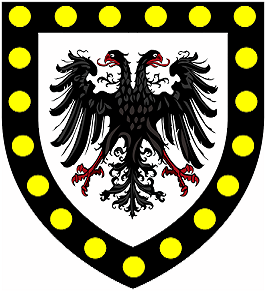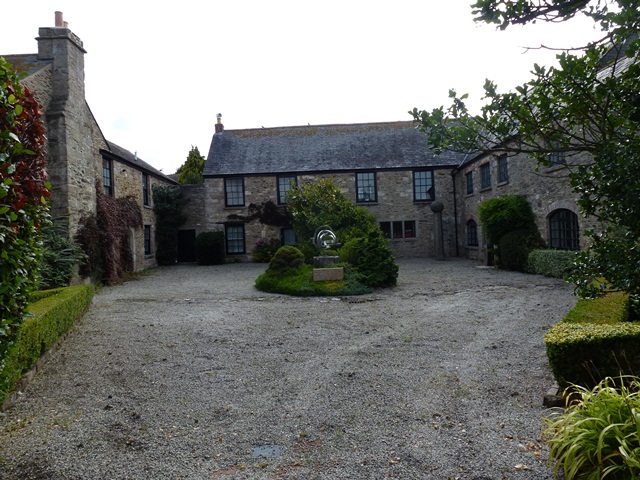Peter Killigrew (c.1593-1668) on:
[Wikipedia]
[Google]
[Amazon]
 Sir Peter Killigrew, 2nd Baronet (c 1634 – 8 January 1705) of
Sir Peter Killigrew, 2nd Baronet (c 1634 – 8 January 1705) of 
/ref> His mother was Mary Lucas, daughter of
Arwenack
Arwenack is a historic Manorialism, manor on the site of what is today the town of Falmouth, Cornwall, Falmouth, Cornwall, England, United Kingdom. Historically in the parish of St Budock water, St Budock, it was partly destroyed in 1646, and on ...
, St Budock, Cornwall was an English politician who sat in the House of Commons
The House of Commons is the name for the elected lower house of the Bicameralism, bicameral parliaments of the United Kingdom and Canada. In both of these countries, the Commons holds much more legislative power than the nominally upper house of ...
in 1660.

Origins
Killigrew was the son of SirPeter Killigrew
Sir Peter Killigrew, 2nd Baronet (c 1634 – 8 January 1705) of Arwenack, St Budock, Cornwall was an English politician who sat in the House of Commons in 1660.
Origins
Killigrew was the son of Sir Peter Killigrew (c.1593-1668), Knight (4 ...
(c.1593-1668), Knight (4th son of John V Killigrew (c.1557-1605), of Arwenack
Arwenack is a historic Manorialism, manor on the site of what is today the town of Falmouth, Cornwall, Falmouth, Cornwall, England, United Kingdom. Historically in the parish of St Budock water, St Budock, it was partly destroyed in 1646, and on ...
, Cornwall, Vice-Admiral of Cornwall and the third Governor of Pendennis Castle
The Governor of Pendennis Castle was a military officer who commanded the fortifications at Pendennis Castle, part of the defences of the River Fal and Carrick Roads, on the south coast of Cornwall near Falmouth. Originally fortified under Henry V ...
), MP for Orkney, Shetland and Caithness in 1659 and for Helston in Cornwall from 1661 - July 1668, commonly known as ''Peter the Post'', because of his great diligence in conveying messages to King Charles I during the Civil War
A civil war is a war between organized groups within the same Sovereign state, state (or country). The aim of one side may be to take control of the country or a region, to achieve independence for a region, or to change government policies.J ...
.John Burke, John Bernard Burke ''A genealogical and heraldic history of the extinct and dormant baronetcies''/ref> His mother was Mary Lucas, daughter of
Thomas Lucas
Thomas Lucas (c.1720–1784) was an English West India merchant, at the end of his life Member of Parliament for Grampound. He was treasurer of Guy's Hospital 1764–1774 and then president of its board of governors until his death.
Business i ...
of St. John's Abbey, Colchester, and sister of Margaret Lucas, wife of William Cavendish, 1st Duke of Newcastle
William Cavendish, 1st Duke of Newcastle upon Tyne, KG, KB, PC (25 December 1676), who after 1665 styled himself as Prince William Cavendish, was an English courtier and supporter of the arts. He was a renowned horse breeder, as well as being ...
(1592-1676) and an attendant of Queen Henrietta Maria
Henrietta Maria of France (French language, French: ''Henriette Marie''; 25 November 1609 – 10 September 1669) was List of English royal consorts, Queen of England, List of Scottish royal consorts, Scotland and Ireland from her marriage to K ...
, wife of King Charles I, with whom she went into exile in France, having departed from Pendennis Castle
Pendennis Castle () is an artillery fort constructed by Henry VIII near Falmouth, Cornwall, England between 1540 and 1542. It formed part of the King's Device programme to protect against invasion from France and the Holy Roman Empire, and de ...
near Arwenack, ''en route'' for the Scilly Isles
The Isles of Scilly ( ; ) are a small archipelago off the southwestern tip of Cornwall, England. One of the islands, St Agnes, is over farther south than the most southerly point of the British mainland at Lizard Point, and has the souther ...
.
Career
In 1660, Killigrew was elected Member of Parliament forCamelford
Camelford () is a town and civil parish in north Cornwall, England, United Kingdom, situated in the River Camel valley northwest of Bodmin Moor. The town is approximately north of Bodmin and is governed by Camelford Town Council. The ward pop ...
in the Convention Parliament. After a double return, he was seated on 5 May 1660, but his election was declared void 12 June 1660. He inherited the baronetcy
A baronet ( or ; abbreviated Bart or Bt) or the female equivalent, a baronetess (, , or ; abbreviation Btss), is the holder of a baronetcy, a hereditary title awarded by the British Crown. The title of baronet is mentioned as early as the 14th ...
on the death of his uncle Sir William Killigrew, 1st Baronet in 1665.
Killigrew died in 1705 and was buried at Falmouth. He had married Frances Twysden, daughter of Sir Roger Twysden
Sir Roger Twysden, 2nd Baronet (21 August 1597 – 27 June 1672), of Roydon Hall near East Peckham in Kent, was an English historian and politician who sat in the House of Commons at various times between 1625 and 1640.
Life
Twysden was the son ...
, of East Peckham, Kent and had 2 sons and 2 daughters. His son George was killed in a duel in a tavern in Penryn. As his other son had also predeceased him the baronetcy became extinct. His Arwenack property passed to his daughter Anne, the wife of Martin Lister, who (Lister) thereupon adopted the name of Killigrew.
References
{{DEFAULTSORT:Killigrew, Peter 1630s births 1705 deaths Members of the pre-1707 English Parliament for constituencies in Cornwall English MPs 1660